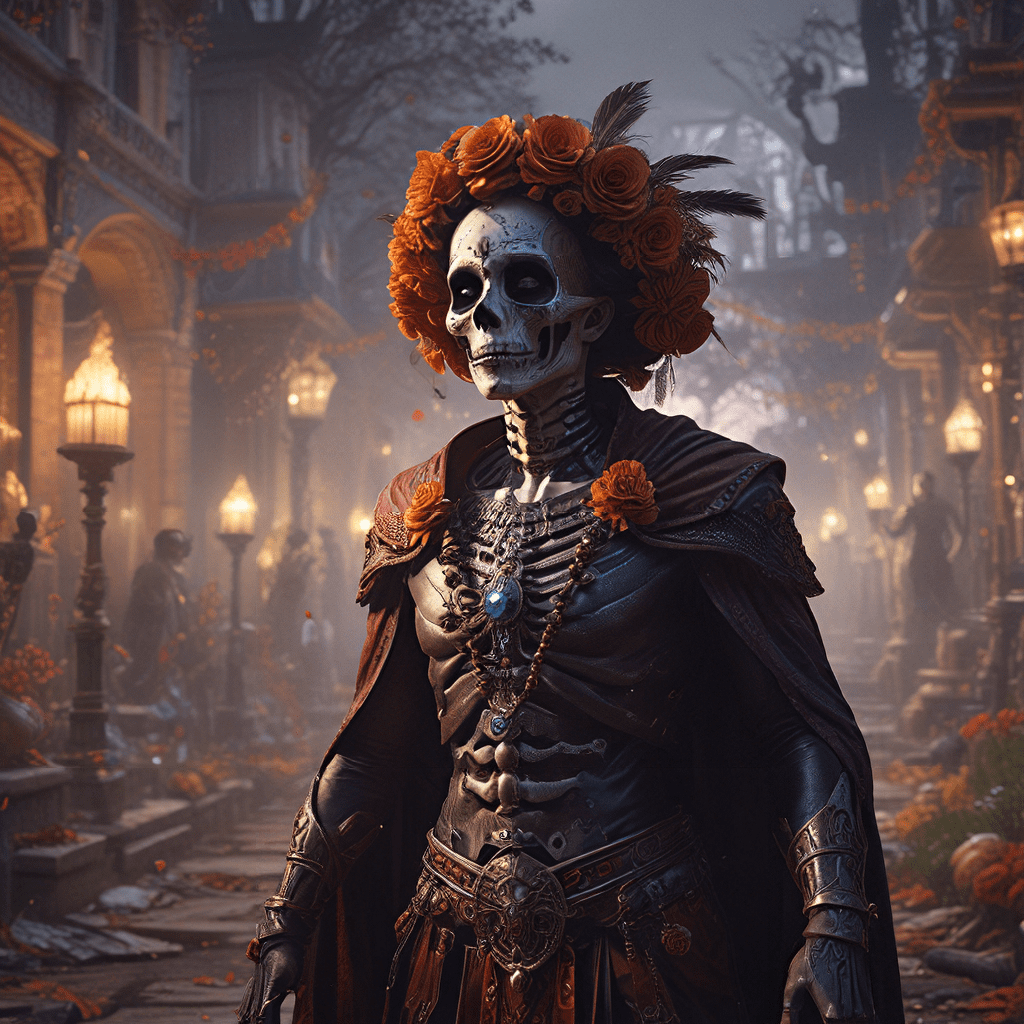The Land of the Eternal: Celebrating the Festival of the Dead
In the ancient Egyptian civilization, death was not viewed as an ending but as a transition to a new and eternal realm. This belief is reflected in their elaborate rituals and monuments dedicated to the afterlife, with the “Festival of the Dead” standing as a testament to their profound reverence for the deceased.
1. Introduction: The Significance of Death in Ancient Egyptian Belief
The Egyptians believed that life and death were intrinsically linked, forming a continuous cycle. Their ultimate goal was to achieve a successful passage to the afterlife, a realm called the “Duat”, where the deceased would reside in the presence of the gods. To ensure this passage, elaborate funerary rituals, including the “Festival of the Dead”, were meticulously performed.
The “Festival of the Dead” played a crucial role in the ancient Egyptians’ belief system. It was not just a somber occasion but a time for collective remembrance and celebration, reaffirming the importance of family and community. This festival served as a reminder that the deceased remained an integral part of their lives, even in their transition to the afterlife.
2. The Journey to the Underworld: A perilous passage
The “Duat”, or underworld, was a complex and often perilous realm, filled with trials and challenges that the deceased had to overcome. Guided by the “Book of the Dead”, a collection of spells and rituals believed to ensure safe passage, the deceased’s spirit would embark on a journey through various domains, facing judgment and testing.
The “Book of the Dead” was a crucial companion on this journey. It provided essential knowledge and spells needed to navigate the challenges of the underworld. The deceased, accompanied by their “Ka” (spiritual essence), would encounter gods and mythical creatures, needing to recite the correct spells and overcome obstacles to reach the final judgment.
3. The Festival of the Dead: A Celebration of Life and Memory
The “Festival of the Dead”, a yearly celebration, was a time to honor the memory of ancestors and deceased loved ones. This festival was an opportunity for families to come together and share stories, offering food and gifts to the deceased as a token of remembrance and love. It was a time to strengthen the bond between the living and the dead, ensuring their continued connection.
The Egyptians believed that by honoring their ancestors, they were acknowledging their role in the family lineage and were ensuring their continued well-being in the afterlife. This practice served as a reminder that the deceased were not forgotten and their memory would live on through generations.
4. Rituals and Offerings: Honoring the Dead
During the “Festival of the Dead”, a series of rituals were performed to honor the deceased. Offerings of food, drink, and precious objects were placed in tombs as symbolic nourishment for the departed’s journey in the afterlife. funerary masks and statues, crafted in the likeness of the deceased, were believed to house their “Ka” and provide protection.
Priests played a vital role in facilitating these rituals, guiding the families through the intricacies of the ceremonies and ensuring their proper execution. Their knowledge of religious practices and rituals was crucial in connecting the living to the spiritual realm, allowing for a seamless transition for the deceased.
5. The Pyramid and Tomb: Lasting Monuments
To ensure the eternal resting place of the deceased, the Egyptians constructed elaborate tombs and pyramids. These grand structures were not just burial chambers but elaborate representations of the journey to the afterlife.
Tomb decorations, including hieroglyphics, paintings, and sculptures, symbolized the deceased’s journey through the underworld. These intricate depictions provided a visual narrative, guiding the deceased through the challenges they would face and ensuring their successful passage into the realm of Osiris.
6. The God of the Dead: Osiris and his role in the afterlife
Osiris, the god of the dead, played a pivotal role in the afterlife. His story of death and resurrection symbolized the cycle of life and death, and his judgment of the deceased determined their fate in the underworld.
After their journey through the “Duat”, the deceased faced the “Weighing of the Heart” ceremony, presided over by Osiris. Their heart was weighed against the feather of Ma’at, the goddess of truth and justice. If their heart was found to be lighter than the feather, they were deemed worthy of entering the realm of eternal bliss. If not, they faced a different fate in the underworld.
7. The “Book of the Dead” : A Guide
The “Book of the Dead” served as a comprehensive manual for the deceased, containing spells, prayers, and rituals to assist them in their journey to the afterlife. It provided guidance on how to navigate the underworld, face the trials, and ultimately secure a place in the eternal realm.
The “Book of the Dead” was a testament to the Egyptians’ deep belief in the power of words and their ability to influence the spiritual realm. These texts, meticulously inscribed on papyrus, were a constant companion on the deceased’s journey, ensuring their safe passage and eternal peace.



